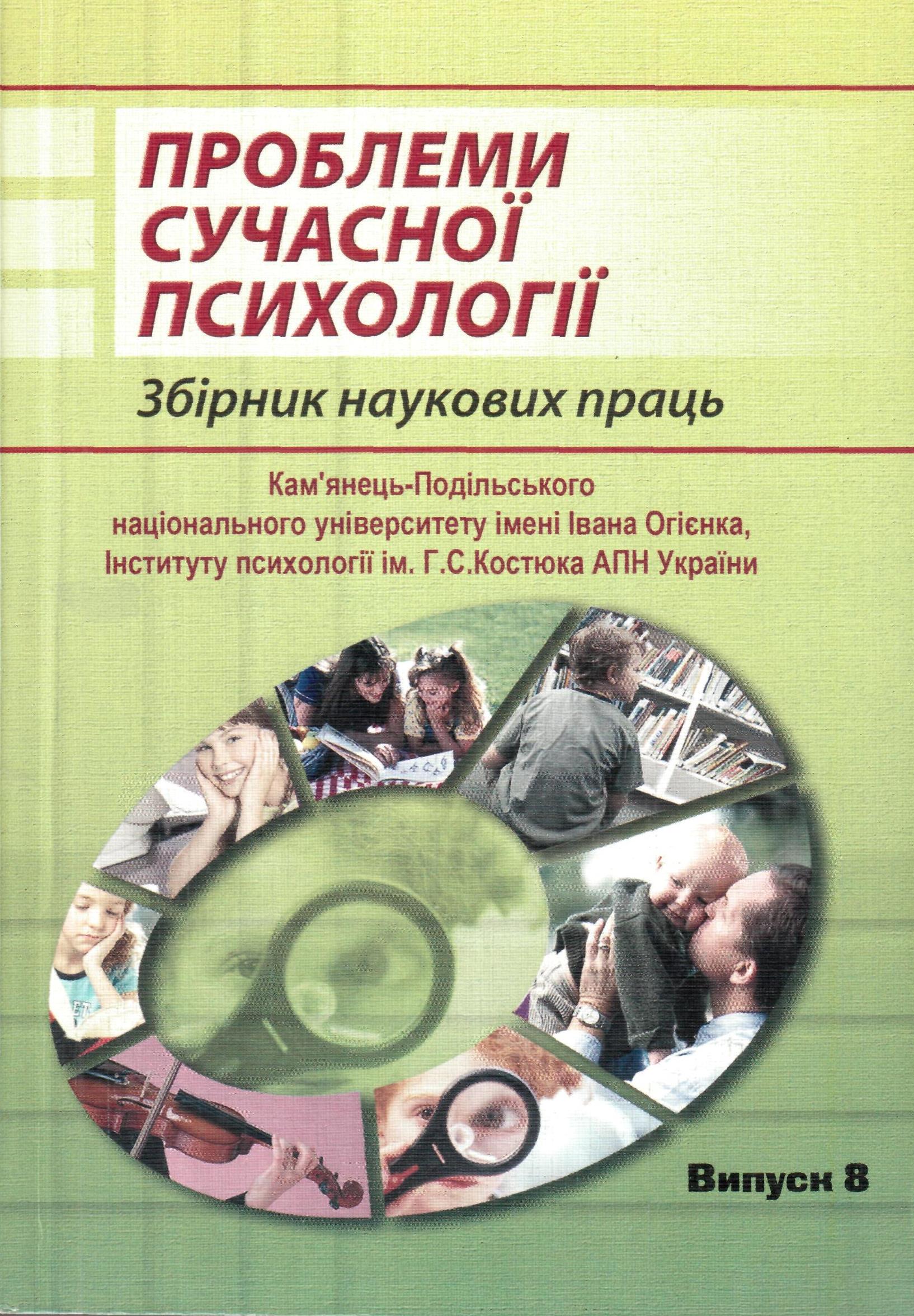Феномен сінергії як стимулятор креативного мікроклімату в психологічній навчальній системі
DOI:
https://doi.org/10.32626/2227-6246.2010-8.%25pKeywords:
креативний, креативність, сінегрія, мікроклімат.Abstract
В даній статті показано, що відродження креативності методом лінгво
культурологічного включення на початковому етапі навчання італійської
мови забезпечує сінергетичний взаємоконтакт між викладачем і
студентами, сприяє створенню благодійного мікроклімату і підтримує
підліткову допитливість студентів та тенденцію до самоактуалізації.
References
Абульханова Славская К.А. Стратегия жизни. – М.: 1991.
Воронин А. Н. Интеллект и креативность в совместной
деятельности: дис. ... д ра психол. наук: 19.00.13. – М.,
– 362 с.
Ломов Б.Ф. Методологические и теоретические проблемы
психологии. – М.: Наука, 1984. – 444 с.
Чуба О.Є. Формування креативності студентів як психолого
педагогічна проблема // Актуальні проблеми психології:
Збірник наукових праць Інституту психології ім. Г.С. Ко
стюка АПН України. – Житомир: Вид во ЖДУ ім. І. Фран
ка. – Т. ХІІ. – Вип. 6, 2009. – С. 318 323.
Шеховцова Л.Ф. Проблема энергетического потенциала
человека в научной школе Б.Г. Ананьева // Психологический
журнал. – 2007. – Том 28. – № 5. – С. 89 95.
Bryman A. Charisma and leadership in organization. – Lon
don: Sage, 1992.
Den Hartog D.N., House R.J & 170 coauthors. Emics and etics
of culturally endorsed leadership theories: Are attributes of
charismatic transformational leadership universally endorsed? //
Leadership Quarterly, 1999, 10, pp. 219 256.
Lee S., Wong K.C. Rethinking neurasthenia: The illness con
cepts of shenjing shuairuo among Chinese undergraduates in
Hong Kong // Culture, Medicine and Psychology, 1995, 19,
pp. 91 111.
Misumi J. The behavioral science of leadership: An interdisci
plinary Japanese research program. – Ann Arbor: University of
Michigan Press, 1985.
Sinha D. Ahimsa as conflict resolution technique and instru
ment of peace: A psychological appraisal // In Proceedings of
the Seminar on Peace and Conflict Resolution in the World Com
munity, India, 1987.
Downloads
How to Cite
Issue
Section
License
Copyright
The Editorial Board has the full right to publish original scientific papers containing results of theoretical and experimental research works which are not currently subject to review for publication in other scientific editions. The Author shall transfer to the editorial board of the Collection the right to spread the electronic version of the paper, as well as the electronic version of the paper translated into English (for papers originally submitted in Ukrainian and Russian) by all kinds of electronic means (placement at the official website of the Collection, electronic databases, repositories etc).
The Author of an article reserves the right to use materials of the paper, without approval with the editorial board and the founders of this Collection: a) partially or fully, for educational purposes; b) for writing own dissertation papers; c) for preparation of abstracts, conference reports and presentations.
The Author of an article can place electronic copies of the paper (including the final electronic version downloaded from the official website of the Collection) at:
- personal web resources of all Authors (websites, webpages, blogs etc.);
- web resources of the institutions where the Authors are employed (including electronic institutional repositories);
- non-profit public access web resources (for example, arXiv.org).
But in all cases, it is obligatory to have a bibliographic reference to the paper, or a hyperlink to its electronic copy placed at the official website of this Collection.







